How to Teach a Dog to Fetch in 8 Simple Steps
Published: Last updated: by Jessi Larson Affiliate Disclosure: We hope you love the products we've recommended! As an Amazon Associate we earn a small share from qualifying purchases.Playing fetch with your dog is a wonderful activity. But first things first, you need to figure out how to teach a dog to fetch. We’ll show you how.
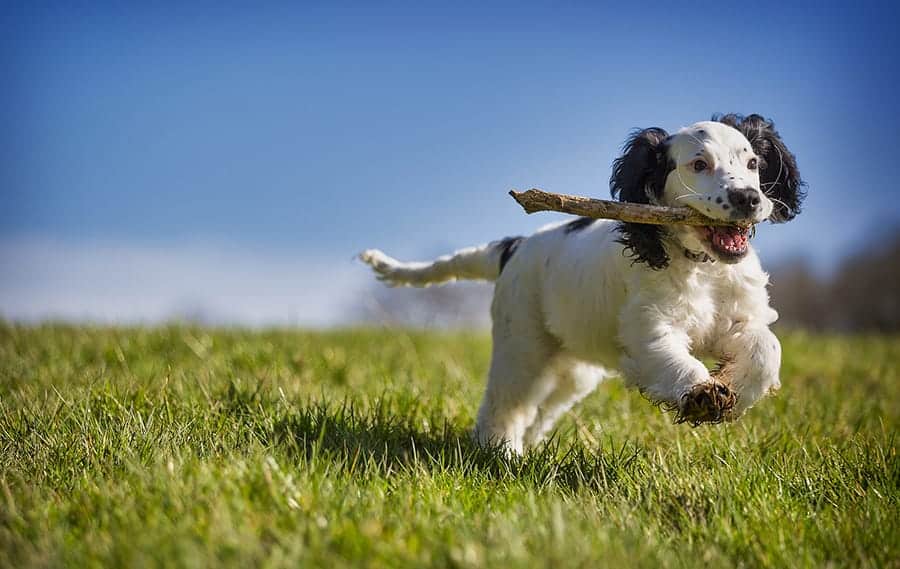
Training Guide: How to Teach a Dog to Fetch
Playing fetch is an awesome way to get your pup moving and keep them fit and happy. Here’s how to teach a dog to fetch in no time.
1. Choose the Right Fetch Toy
Choosing the right fetch toy depends on your dog’s preference. If you get the best response from a tennis ball, go with that, or maybe a special favorite toy that you know will get your dog excited.
We love Chuckit! balls because they’re made of extra durable materials and float in water. Toby has chewed every tennis ball we’ve ever owned, but we still have the same Chuckit! ball from when he was a puppy.
If your pup doesn’t show interest in a ball, try something else that they enjoy – like a toy to play a game of tug of war. This activity can then naturally be taught to evolve into fetching, but more on that later.
If all else fails and you have no idea what kind of toy to go with, try presenting an array of choices to your dog and letting them choose their favorite on their own.
Just be sure to stay away from smaller balls that are smooth in texture and can be easily be swallowed when fetching.
2. Introducing the Toy to Your Dog
The next thing on the list is introducing the toy to your dog and getting them really interested in playing with it. This is a great time to train using treats for positive reinforcement.
To start, simply place the toy in front of your dog and wait for them to show interest. Reward that interest or any movement toward the toy with a treat.
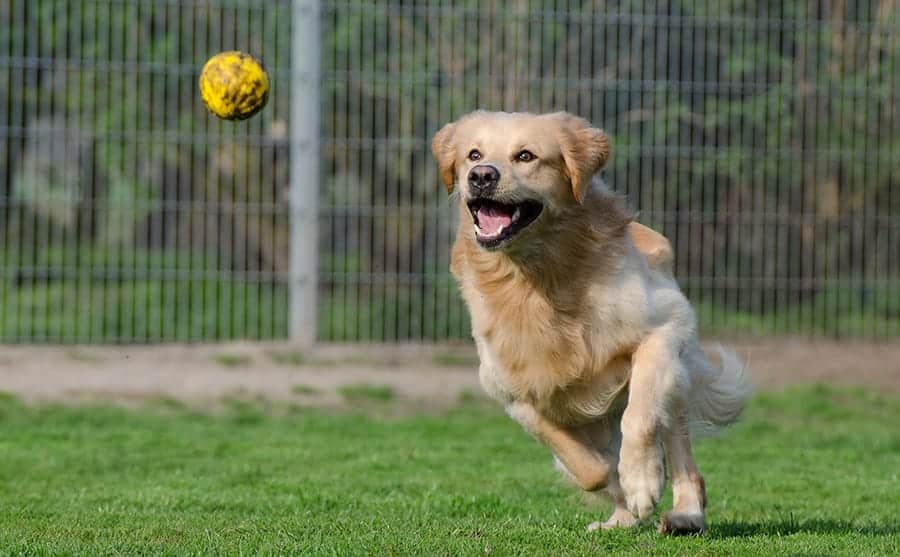
3. Start Moving the Toy Farther
After you help develop plenty of interest and association with a reward, it’s time to start moving the toy further away from your pup and see how they react.
Most dogs will go to the toy – a behavior that should be rewarded with a small treat.
If your dog is slow to get started, take things one step at a time and try to lead your dog towards the toy through positive reinforcement.
If this doesn’t work, try another toy.
4. Encourage Grabbing the Toy
If your dog hasn’t already started to do so, it’s time to reinforce grabbing the toy in their mouth.
Watch your dog closely to make sure you’re reinforcing the exact behavior you want. So wait until your dog picks the toy up by the mouth to give the positive reinforcement.
With some dogs, this behavior comes naturally, while you may have to coax and encourage others with each step.
If you’re having trouble, try reassuring and giving rewards each time your dog comes close to picking up the toy with their mouth to make it perfectly understood that this is the behavior you want.
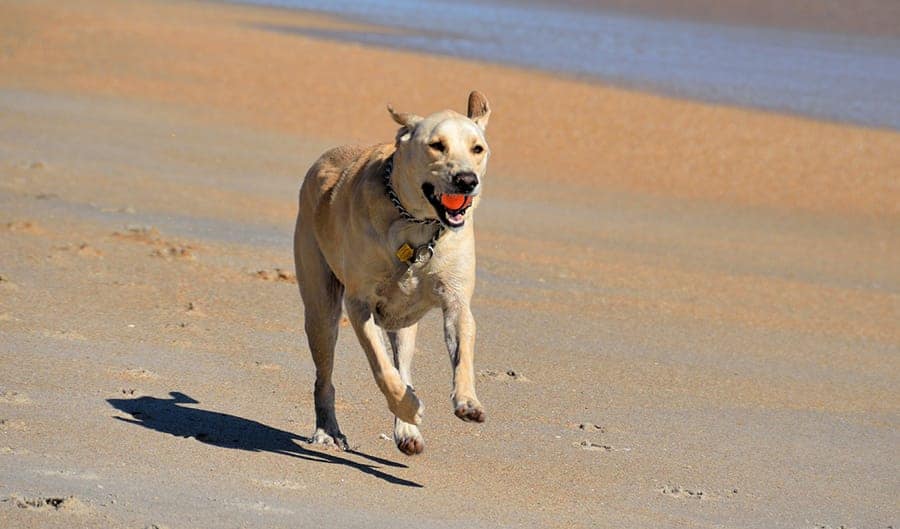
5. Start with Indoor Fetch First
After your dog is consistently picking up the toy, you’re ready to take on perhaps the most involved part of this process.
First, start by tossing the toy a few feet away and reward the same behavior as before.
Next, you’ll do the same thing and also encourage your dog to bring the toy back to you. When they do this, provide your dog with a treat along with plenty of encouragement.
Remember to just take it a small step at-a-time and you’ll slowly see success.
6. Increase the Distance
Now it’s time to increase the distance when you throw you dog’s toy. This is probably best done in a hallway to cut down any distractions.
Every time your pup brings the toy back to you successfully, throw the toy a little bit further, then repeat as many times as your dog needs to understand the premise of the game.
Don’t forget to keep rewarding them each time with a treat and praise.
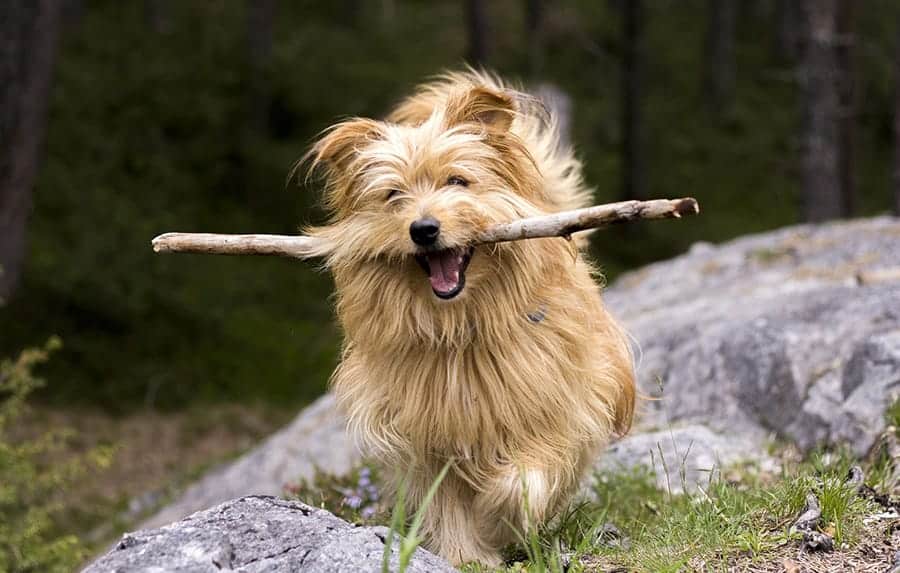
7. Add a Verbal Signal
Though some people choose to bypass this step altogether, you can also add a signal word, like “fetch,” to reinforce this learned behavior.
If you’re going to use one, you should introduce it when your dogs starts to successfully complete the trick.
Give the command before throwing the toy, then reward a successful fetch with a treat and words to instill the signal, such as “good fetch!”
Whether you choose to use a signal word or not, both you and your dog should be enjoying this game by now and having a great time!
8. Move the Game Outside
When you’ve mastered the game of fetch inside of your home, you’re ready to take it to a whole new level by going outdoors.
If you have a private space, such as a back yard, it may be a good place to start to avoid excessive distractions.
Otherwise, just take your game to the park, but whenever possible, try to go at a time when there aren’t too many other dogs and people around. If your dog isn’t trained to go off-leash, you’ll want to work on that first before playing fetch out and about.
When you do go out, be sure to take plenty of treats with you. Then, play fetch just as you did at home, and increasingly throw the ball further and further away.
Like before, reward each successful fetch with a treat as well as lots of praise.
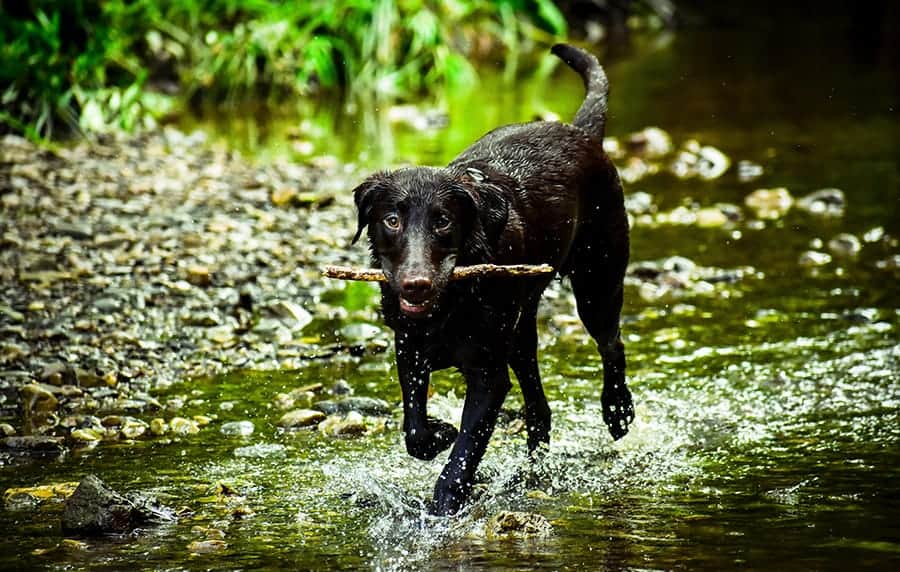
Final Thoughts on How to Teach a Dog to Fetch
We hope following these steps have taught you how to teach a dog to fetch successfully.
As always, refrain from using punishment when training and show plenty of patience if your pup isn’t immediately getting it. With some time and practice, you’ll have this fun and engaging game mastered!
Watch a Training Video
As you learn how to teach a dog to fetch, sometimes it helps to see the process in action.
Lucky for us, dog trainer Zak George has put together a video on the topic. It’s another great resource on how to teach a dog to fetch quickly and effectively.
We love George’s positive, fun and informational style, and he has a wide variety of videos on other training topics that are great to check out.
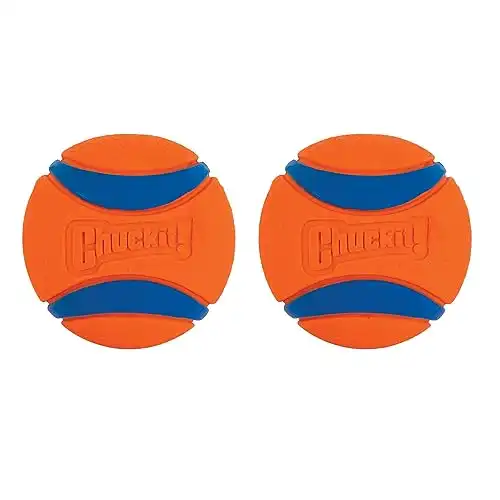



 Getting a New Dog?
Getting a New Dog?